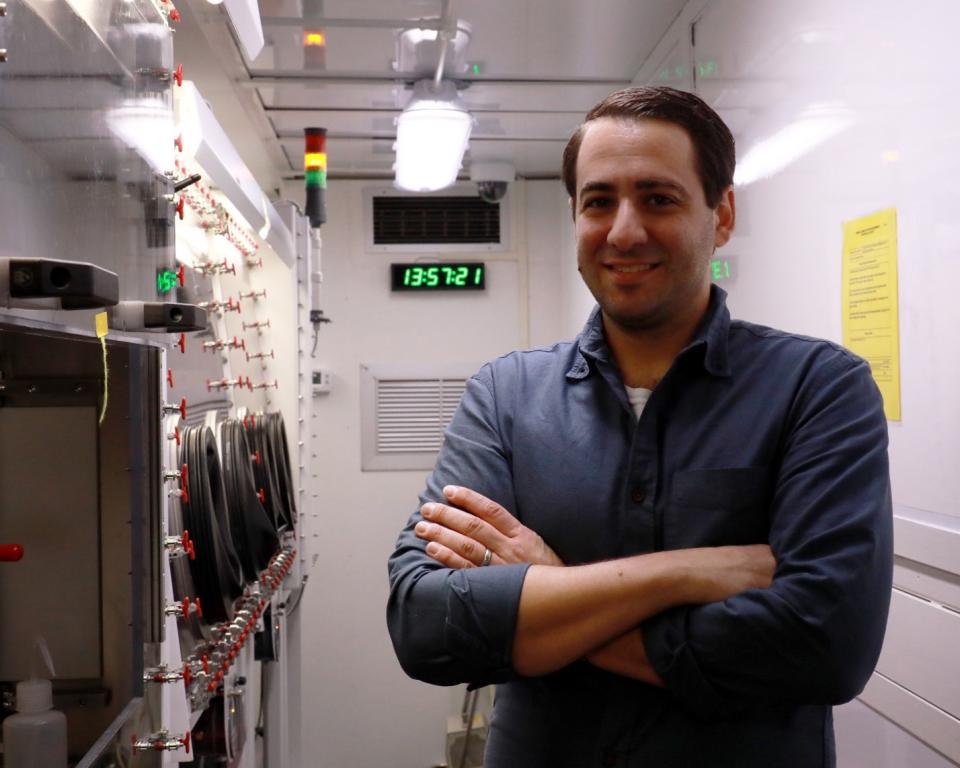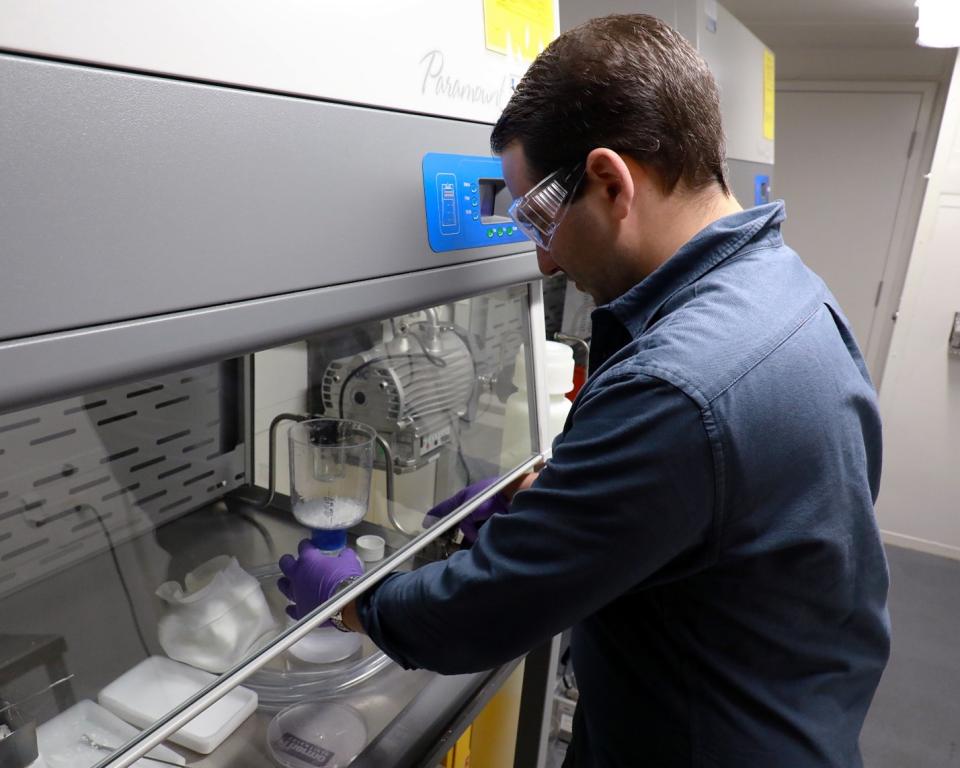
One of the most effective strategies to help reduce the spread of COVID-19 is also one of the simplest: KN-95 face masks. Domenick Leto, a nonproliferation chemist and engineer at the Department of Energy's Oak Ridge National Laboratory, applies the same line of thinking to solving complex national security problems: start simple.
Leto worked at the Kansas City National Security Campus when the COVID-19 pandemic hit in March 2020. He recalled how his wife, a nurse working in hospitals through the pandemic, had to re-use KN-95 masks during a shortage.
“Masks weren’t designed to be reused, but medical professionals were using masks much longer than they were intended for,” Leto said.
His colleague had an idea to sterilize KN-95 masks using vaporized hydrogen peroxide and invited Leto to join his project. The team found a simple, inexpensive method that was over 99% effective at sterilizing against the SARS-CoV-2 virus using minimal supplies and no electricity. The method worked on KN-95 masks, stainless steel surgical tools and the common ABS plastic used in many daily items. Their device was recently granted a patent.
The design puts a small Tyvek envelope containing a glass ampoule of liquid hydrogen peroxide and a small envelope of desiccant into a container with one medical face mask. When the glass ampoule of liquid hydrogen peroxide is broken open by the user, the Tyvek envelope retains the liquid while allowing the hydrogen peroxide and water vapors to permeate through the envelope and into the container. The desiccant packet preferentially absorbs the water vapor, thereby increasing the concentration of hydrogen peroxide in the container. The vaporized hydrogen peroxide neutralizes the virus particles on the mask, allowing the user to wear the newly sterilized mask again.

Because of its simple design, the decontamination container can be scaled as needed, allowing utility beyond a pandemic. The method can also sterilize surgical equipment during a prolonged national emergency or small toys (e.g., Legos) at a daycare.
Drawing from his experience during the pandemic, Leto recognizes the need for the United States to have inexpensive, reliable capabilities to combat any type of disruption to national security, including nationwide medical emergencies.
Leto brought his inorganic chemistry background to ORNL in 2022 when he joined the nuclear nonproliferation mission. He wanted to support defense work but wasn’t sure how to get into the industry after graduate school. He accepted a job offer from a nonprofit research institute that led him to opportunities to work within the nuclear industry and ultimately found projects with the Department of Defense. Leto said he took a chance and now uses chemistry to develop solutions to national security challenges ranging from carbon fiber composites to advanced nuclear reactors.
At ORNL, Leto is excited to explore more of the user facilities and capabilities that could be applied to national security. “There is cutting-edge technology here that isn’t found elsewhere that has the potential to be applied to new challenges we face as a nation.”
UT-Battelle manages ORNL for the Department of Energy’s Office of Science, the single largest supporter of basic research in the physical sciences in the United States. The Office of Science is working to address some of the most pressing challenges of our time. For more information, please visit energy.gov/science.


